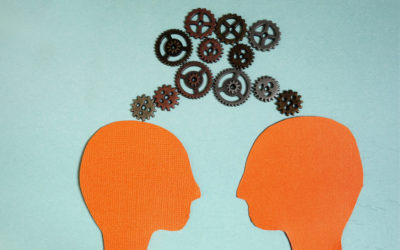
Near-death experiences have fascinated many people ever since they have been reported. And these experiences guide our view of how we die: the memories of your life passing in front of your eyes, the tunnel of light, the floating movement towards a bright light.
However, this has been difficult to research. The nature of being near to death, or briefly dead, means different things may happen in the brain that can cause hallucinations. For example, Olaf Blanke showed that out of body experiences can be induced in healthy individuals by activating and deactivating different parts of the brain.
Enter this case whereby a team of researchers around Dr. Ajmal Zemmar, a neurosurgeon based at the University of Louisville, actually managed to get EEG recordings of a person as they died.
No this was not a bizarre experiment, which is difficult to run, and would have many moral implications. They had wired up this 87 year-old who was having a severe epileptic seizure, which could be fatal, to try and see what was happening — however this individual had a DNR (do not resuscitate) status and after consulting with the family the patient passed away. This provided the only known example of a person with a quality EEG recording during death.
Obviously, it is a case of only one person who has just had a major epileptic seizure but provides the first glimpse of what is happening in the brain during death. So, you may want to know whether your life’s memories pass in front of your eyes?
Well, they did see a spike in gamma brain wave activity, and gamma waves are also associated with memory recall, shortly before death. However, a gamma spike could also mean many other things. They also noticed enhanced neuronal coherence and coupling — basically showing coordinated activity across the brain.
This case study of one person is therefore interesting, but as a population of one, difficult to draw any conclusions. However, it is a start to get the neural signature of death. What they did note however, is that death is not a sudden thing but much more drawn out than you might expect with cells and processes shutting down over minutes, and hours.
On the same topic another group of researchers around Sam Parnia have also issued a position statement on death and also near-death experiences — this summarises the research but also calls for more structured research around this to pull together these strands of evidence and give greater clarity as to how and in what form death happens and the experiences that accompany this — including those near-death experiences.
I’ll certainly be watching this space with interest.
References:
Vicente Raul, Rizzuto Michael, Sarica Can, et al.
Enhanced Interplay of Neuronal Coherence and Coupling in the Dying Human Brain
Frontiers in Aging Neuroscience: 14; 2022
DOI=10.3389/fnagi.2022.813531
Sam Parnia, Stephen G. Post, Matthew T. Lee, et al.
Guidelines and standards for the study of death and recalled experiences of death — a multidisciplinary consensus statement and proposed future directions.
Annals of the New York Academy of Sciences, 2022
DOI: 10.1111/nyas.14740
More Quick Hits
Caffeine Makes You More Prone to Impulsive Buying
Quick HitsDaily brief research updates from the cognitive sciences fascinating piece of research just published shows that drinking coffee makes you more impulsive. That means you are likely to buy more, and more items you actually don’t need....
Healthy Brains Are Hotter Than You Think
Quick HitsDaily brief research updates from the cognitive sciences hen we get sick we get a fever and we all know what our body temperature should be: around 37°C. Too much above that and we have a fever, and too much below and we risk...
Unpredictable Parents Disrupt Brain Circuitry in Children
Quick HitsDaily brief research updates from the cognitive sciences ntuitively we all know that good parenting is essential to kids’ healthy development. We all agree on that. But as soon as we try to define what good parenting is we then enter into...
A New Study on Inter-Brain Synchronisation
Quick HitsDaily brief research updates from the cognitive sciences n case you didn’t know it brain synchronisation (or inter-brain synchronisation) is a thing. And a pretty cool thing. This happens when two, or more, people do similar things...
Unique Social Genes in Human Beings
Quick HitsDaily brief research updates from the cognitive sciences ne differentiating factor with human beings is our pro-sociality. This means we are a social species, and this sociality is seen in our ability to empathise, be socially tolerant,...
Want to Live Longer? Be Optimistic!
Quick HitsDaily brief research updates from the cognitive sciences e probably all know some people who are particularly pessimistic - always putting a negative side to things and expecting the worst outcomes. We probably also know some people who...
How Having Had COVID-19 Negatively Impacts Performance at Work
Quick HitsDaily brief research updates from the cognitive sciences ’m sure we’re all aware of the various negative aspects of having contracted COVID-19 such as long COVID but also the brain fog that seems to have been a feature that many people...
Narcissistic Leaders Block Knowledge Flow and Cooperation
Quick HitsDaily brief research updates from the cognitive sciences arcissism is considered one of the three dark-triad traits and something that has been reported as being common in senior leaders. The important question is can and does this hinder...
The Science of Exposing Liars
Quick HitsDaily brief research updates from the cognitive sciences he one place that we can consistently catch people lying is in job interviews. And the question has long been how do you catch out these liars? The answer is you need to outsmart...
High Traffic Noise at School, Slower Cognitive Development
Quick HitsDaily brief research updates from the cognitive sciences ho would have thought that traffic noise could impact cognitive development of kids? Well according to this recent piece of research it can. Are you sure? Well, these researchers...










